Growing up, I was obsessed with Lucky Me instant noodles, those little packs were my after-school lifeline. But when my Tita Marilyn taught me how to make real Pancit Bam-i, everything changed.
This isn't your typical single-noodle pancit. It's the ultimate Filipino comfort food that combines both chewy canton noodles and silky rice noodles in one incredible dish. Packed with tender chicken, savory pork, plump shrimp and colorful vegetables, this recipe creates layers of flavor that no instant noodle could ever match.
The best part? It's easier than you think and feeds a crowd, making it perfect for family gatherings or when you want to impress guests with authentic Filipino flavors.
Jump to:
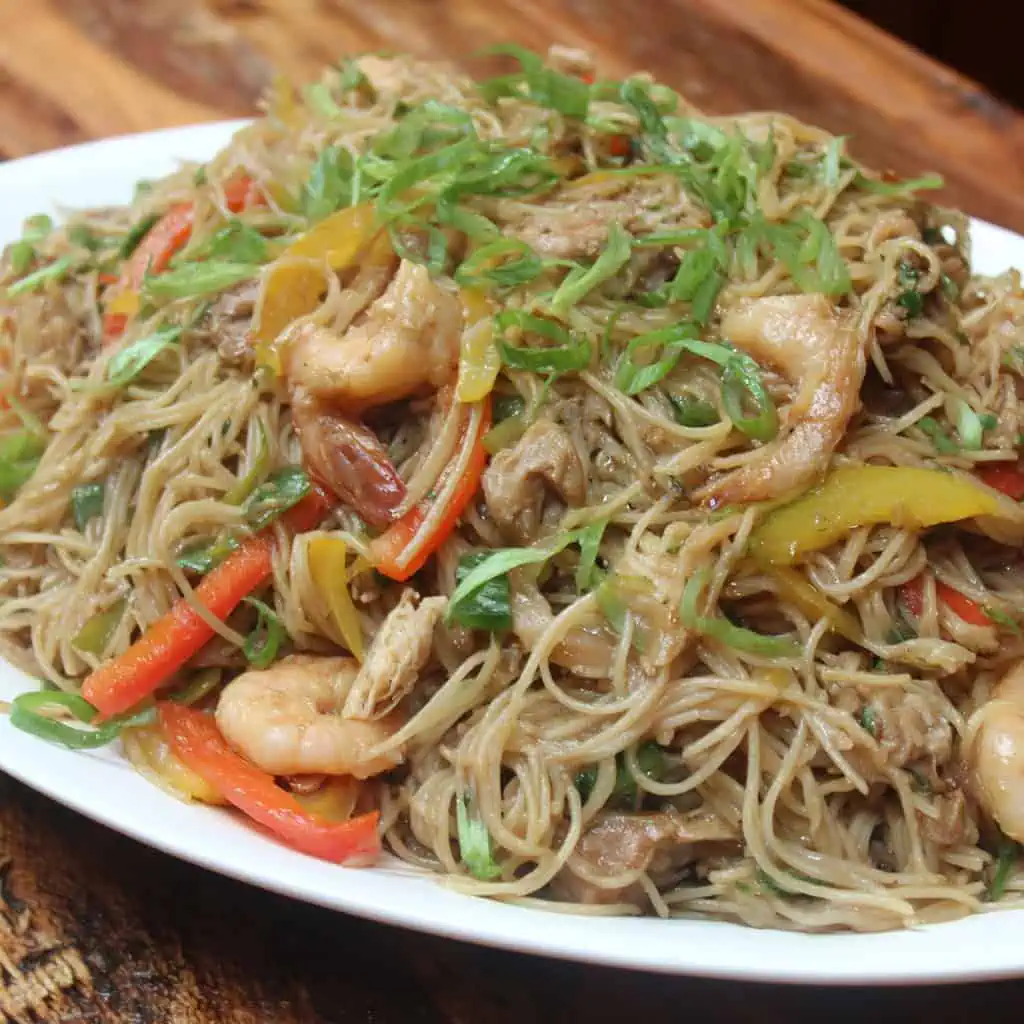
Why You'll Love This Recipe
This authentic Pancit Bam-i brings together the best of both worlds with its perfect combination of chewy canton noodles and silky rice noodles. The triple protein of chicken, pork, and shrimp creates an incredibly satisfying and flavorful dish that's perfect for celebrations or family gatherings.
The colorful vegetables add freshness and crunch, while the savory-sweet sauce ties everything together beautifully. It's a complete meal in one dish that never fails to impress guests and brings that authentic Filipino comfort food experience to your table.
Ingredients
- 1 pound canton noodles
- ⅔ pound rice noodles
- ½ pound chicken breast
- 1 pound pork shoulder, sliced thin
- 1 pound medium shrimp, peeled
- 4 pieces Chinese sausage (chorizo de bilbao)
- 5 cloves garlic, crushed and peeled
- 1 medium onion, sliced
- 1 medium red bell pepper, sliced
- 1 medium green bell pepper, sliced
- 1 cup broccoli florets
- 1 cup cauliflower florets
- ½ cup carrots, julienned
- ½ cup snow peas
- ½ cup cabbage, shredded
- ½ cup mushrooms, chopped
- 4 tablespoons soy sauce (plus more to taste)
- 2 tablespoons white vinegar
- 4 tablespoons cooking oil
- 1 teaspoon brown sugar
- ½ teaspoon freshly ground black pepper
- ¼ cup green onions, sliced (for garnish)
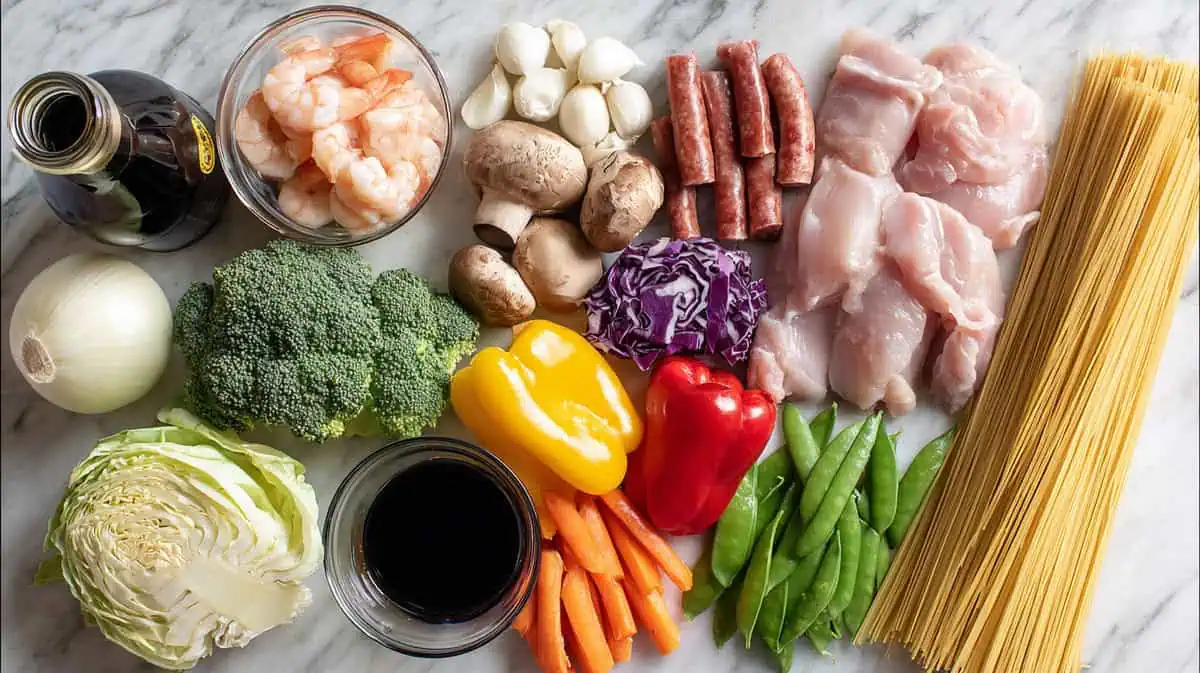
The combination of canton and rice noodles gives this dish its signature texture contrast - the canton provides chewiness while rice noodles add silkiness. The triple protein ensures rich flavor depth, while Chinese sausage adds a sweet-savory element that's essential to authentic Pancit Bam-i.
The variety of vegetables creates beautiful color and provides essential nutrients and crunch, making this a well-balanced, complete meal.
Equipment
- Large wok or deep skillet - Essential for proper stir-frying and accommodating all ingredients
- Medium saucepan - For boiling chicken and creating flavorful broth
- Large mixing bowls - For soaking noodles and organizing ingredients
- Sharp knife and cutting board - For efficient ingredient preparation
- Slotted spoon - To remove proteins while preserving flavored oils
- Kitchen scissors - For cutting rice noodles to desired length
- Serving platter - For beautiful presentation
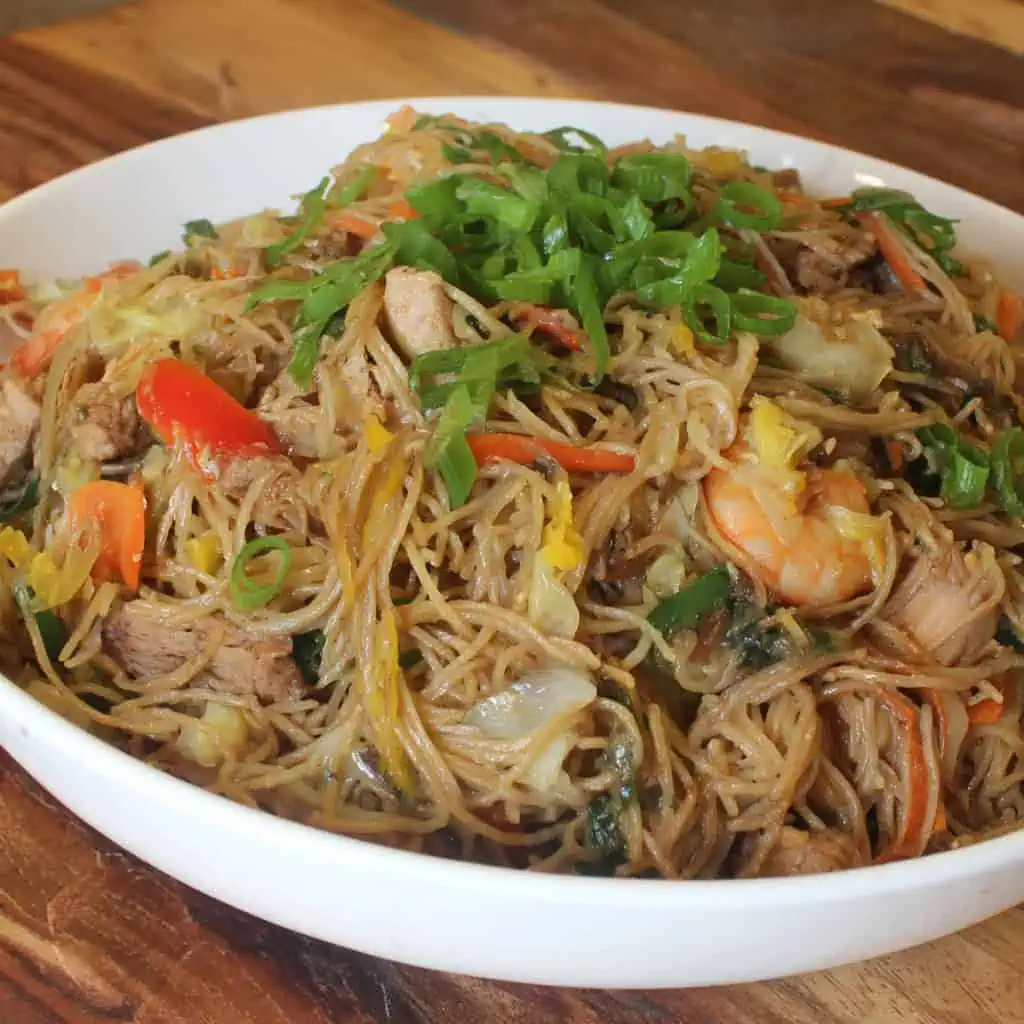
How To Make
- Place chicken breast in a medium saucepan with 2 cups water and a pinch of salt. Bring to a boil and cook for 15-20 minutes until fully cooked through. The chicken should reach an internal temperature of 165°F and be tender enough to shred easily.
- Remove the cooked chicken from the pot and set aside to cool, but save the flavorful cooking liquid as this will become your base broth. Once the chicken is cool enough to handle, shred it into bite-sized pieces using your hands or two forks.
- While the chicken cools, marinate the pork slices in 2 tablespoons soy sauce and vinegar for at least 10 minutes. This step tenderizes the meat and infuses it with flavor that will enhance the entire dish.
- Heat 1 tablespoon of cooking oil in your large wok or skillet over medium-high heat. Add the marinated pork and stir-fry for 2-3 minutes until cooked through and slightly caramelized. Remove from pan and set aside.
- Chop the Chinese sausage into small pieces and add to the same pan without additional oil. Cook over medium heat, stirring frequently, until the sausage renders its own fat and becomes slightly crispy, about 3-4 minutes. Remove and set aside.
- Add the peeled shrimp to the same pan with the rendered sausage fat, adding a little oil if needed. Stir-fry until the shrimp turn pink and are just cooked through, about 2-3 minutes. Remove with a slotted spoon, leaving the flavorful oil in the pan, then cut shrimp into smaller pieces.
- In the same flavorful pan, sauté the crushed garlic and sliced onions over medium heat until fragrant and the onions become translucent, about 2-3 minutes. This creates the aromatic base for your dish.
- Return the cooked chicken and pork to the pan and stir-fry together for 2 minutes, allowing the flavors to meld and the proteins to absorb the aromatic oils.
- Add all the vegetables - bell peppers, broccoli, cauliflower, carrots, snow peas, and cabbage. Stir-fry for 5 minutes, stirring frequently to ensure even cooking while maintaining some crispness in the vegetables.
- Pour in 1 cup of the reserved chicken broth (enough to cover the mixture), add 2 tablespoons soy sauce and brown sugar. Stir well and let the mixture simmer for 10 minutes, allowing the flavors to develop and the vegetables to become tender.
- While the mixture simmers, soak the rice noodles in cold water until pliable, then cut them to your desired length using kitchen scissors. Also soak the mushrooms briefly in warm water, then chop them coarsely.
- Add the soaked rice noodles and chopped mushrooms to the pan, mixing thoroughly to distribute evenly. Cook for 5 minutes, stirring occasionally to prevent sticking.
- Add the canton noodles and stir frequently for 10-15 minutes until the noodles are tender but still have a slight bite. Add more broth if the mixture becomes too dry.
- Taste and adjust seasoning with additional soy sauce as needed - avoid using salt as soy sauce provides better flavor complexity. Add the cooked Chinese sausage pieces and ground black pepper, stirring for another 5 minutes.
- Remove from heat and transfer to a large serving platter. Garnish with sliced green onions and serve immediately with calamansi or lemon wedges on the side for that authentic Filipino touch.

Tips from Lola's Kitchen
- Always save the chicken cooking liquid - it's liquid gold that adds incredible depth to your Pancit Bam-i
- Don't overcook the shrimp as they'll become rubbery; they continue cooking slightly from residual heat
- Cut vegetables uniformly for even cooking and beautiful presentation
- Taste as you go and adjust soy sauce gradually - you can always add more but can't take it away
- Keep ingredients organized before cooking as this dish moves quickly once you start
- The key to perfect texture is not overcooking the canton noodles - they should be tender but still have bite
- Always serve immediately while hot for the best texture and flavor experience
Substitutions
- No Chinese sausage? Use regular chorizo or even bacon cut into small pieces
- Can't find canton noodles? Use lo mein or chow mein noodles as alternatives
- No rice noodles? Double the canton noodles, though you'll lose the traditional texture contrast
- Vegetarian version? Replace all meats with extra firm tofu, mushrooms, and add vegetable broth
- Different vegetables? Try bok choy, bean sprouts, or green beans based on availability
- No calamansi? Lemon or lime juice works perfectly as a substitute
Troubleshooting
- Noodles too dry? Add more reserved chicken broth gradually while stirring
- Vegetables overcooked? Add them in stages next time - harder vegetables first, leafy ones last
- Too salty? Add a pinch of brown sugar and some fresh vegetables to balance
- Noodles clumping? Make sure to stir frequently and add liquid as needed during cooking
- Bland flavor? Increase soy sauce gradually and ensure you're using the flavorful cooking oils from proteins
Storage & Reheating
- Refrigerator: Store covered for up to 3 days in the refrigerator
- Freezing: Not recommended as noodles become mushy when thawed
- Reheating: Best reheated in a pan with a splash of broth or water to prevent drying
- Microwave: Heat in 30-second intervals, stirring between, adding moisture if needed
- Serving leftovers: Add fresh vegetables or a fried egg on top to refresh the dish
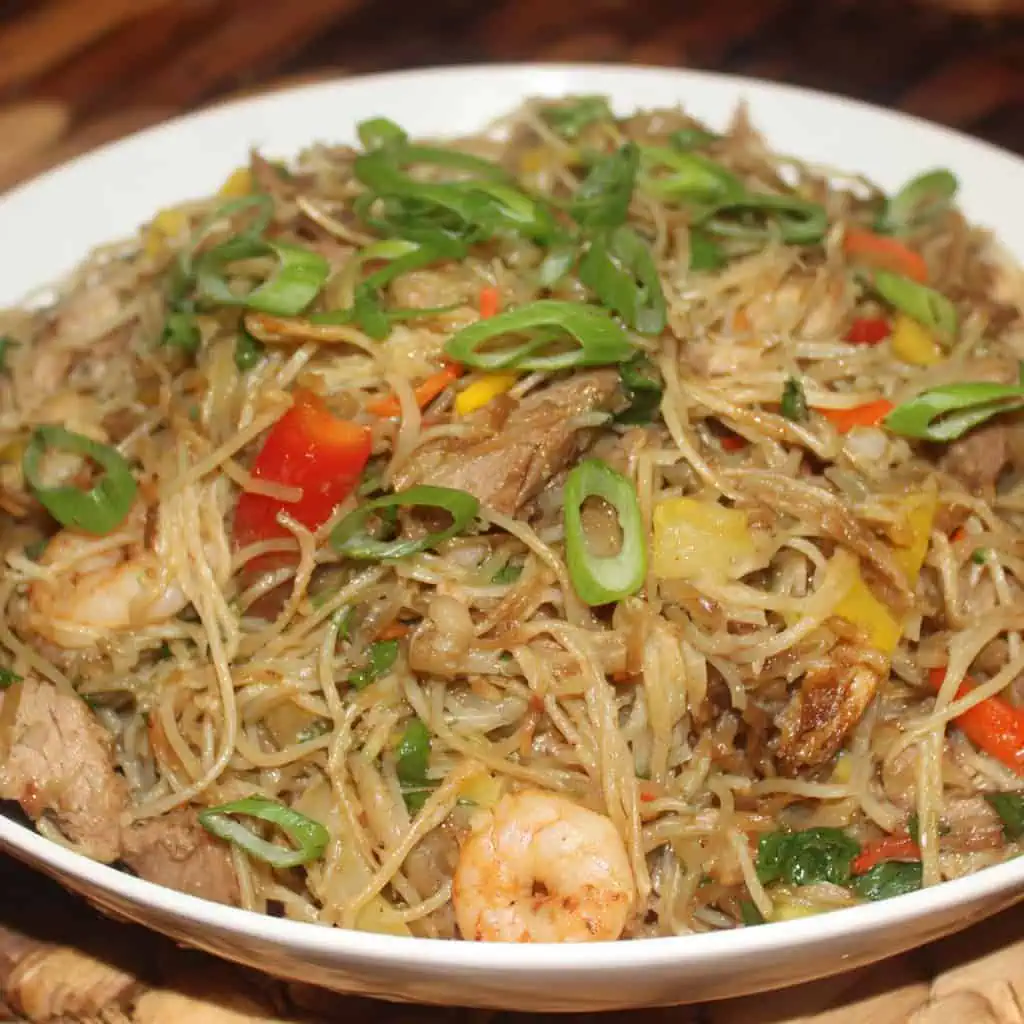
FAQ
Can I make this ahead?
It's best served fresh, but you can prep all ingredients in advance for quick assembly
What's the difference between Pancit Canton and Pancit Bam-i?
Bam-i uses both canton and rice noodles for varied texture
Can I use other proteins?
Absolutely! Try beef, fish, or even just vegetables for different variations
Why is my Pancit Bam-i not flavorful enough?
Make sure to use the protein cooking oils and season gradually throughout cooking
How do I prevent noodles from sticking?
Keep stirring and maintain adequate moisture with broth or cooking liquid
Is this gluten-free?
No, canton noodles contain gluten, but you can use rice noodles only for gluten-free version
Related
Looking for other recipes like this? Try these:
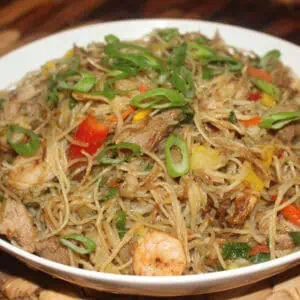
Ultimate Pancit Bam-i Recipe: Filipino Mixed Noodle Delight
Ingredients
- 1 pound canton noodles
- ⅔ pound rice noodles
- ½ pound chicken breast
- 1 pound pork shoulder sliced thin
- 1 pound medium shrimp peeled
- 4 pieces Chinese sausage chorizo de bilbao
- 5 cloves garlic crushed and peeled
- 1 medium onion sliced
- 1 medium red bell pepper sliced
- 1 medium green bell pepper sliced
- 1 cup broccoli florets
- 1 cup cauliflower florets
- ½ cup carrots julienned
- ½ cup snow peas
- ½ cup cabbage shredded
- ½ cup mushrooms chopped
- 4 tablespoons soy sauce plus more to taste
- 2 tablespoons white vinegar
- 4 tablespoons cooking oil
- 1 teaspoon brown sugar
- ½ teaspoon freshly ground black pepper
- ¼ cup green onions sliced (for garnish)
Instructions
- Place chicken breast in a medium saucepan with 2 cups water and a pinch of salt. Bring to a boil and cook for 15-20 minutes until fully cooked through. The chicken should reach an internal temperature of 165°F and be tender enough to shred easily.
- Remove the cooked chicken from the pot and set aside to cool, but save the flavorful cooking liquid as this will become your base broth. Once the chicken is cool enough to handle, shred it into bite-sized pieces using your hands or two forks.
- While the chicken cools, marinate the pork slices in 2 tablespoons soy sauce and vinegar for at least 10 minutes. This step tenderizes the meat and infuses it with flavor that will enhance the entire dish.
- Heat 1 tablespoon of cooking oil in your large wok or skillet over medium-high heat. Add the marinated pork and stir-fry for 2-3 minutes until cooked through and slightly caramelized. Remove from pan and set aside.
- Chop the Chinese sausage into small pieces and add to the same pan without additional oil. Cook over medium heat, stirring frequently, until the sausage renders its own fat and becomes slightly crispy, about 3-4 minutes. Remove and set aside.
- Add the peeled shrimp to the same pan with the rendered sausage fat, adding a little oil if needed. Stir-fry until the shrimp turn pink and are just cooked through, about 2-3 minutes. Remove with a slotted spoon, leaving the flavorful oil in the pan, then cut shrimp into smaller pieces.
- In the same flavorful pan, sauté the crushed garlic and sliced onions over medium heat until fragrant and the onions become translucent, about 2-3 minutes. This creates the aromatic base for your dish.
- Return the cooked chicken and pork to the pan and stir-fry together for 2 minutes, allowing the flavors to meld and the proteins to absorb the aromatic oils.
- Add all the vegetables - bell peppers, broccoli, cauliflower, carrots, snow peas, and cabbage. Stir-fry for 5 minutes, stirring frequently to ensure even cooking while maintaining some crispness in the vegetables.
- Pour in 1 cup of the reserved chicken broth (enough to cover the mixture), add 2 tablespoons soy sauce and brown sugar. Stir well and let the mixture simmer for 10 minutes, allowing the flavors to develop and the vegetables to become tender.
- While the mixture simmers, soak the rice noodles in cold water until pliable, then cut them to your desired length using kitchen scissors. Also soak the mushrooms briefly in warm water, then chop them coarsely.
- Add the soaked rice noodles and chopped mushrooms to the pan, mixing thoroughly to distribute evenly. Cook for 5 minutes, stirring occasionally to prevent sticking.
- Add the canton noodles and stir frequently for 10-15 minutes until the noodles are tender but still have a slight bite. Add more broth if the mixture becomes too dry.
- Taste and adjust seasoning with additional soy sauce as needed - avoid using salt as soy sauce provides better flavor complexity. Add the cooked Chinese sausage pieces and ground black pepper, stirring for another 5 minutes.
- Remove from heat and transfer to a large serving platter. Garnish with sliced green onions and serve immediately with calamansi or lemon wedges on the side for that authentic Filipino touch.
Tips from Lola's Kitchen
- Always save the chicken cooking liquid - it's liquid gold that adds incredible depth to your Pancit Bam-i
- Don't overcook the shrimp as they'll become rubbery; they continue cooking slightly from residual heat
- Cut vegetables uniformly for even cooking and beautiful presentation
- Taste as you go and adjust soy sauce gradually - you can always add more but can't take it away
- Keep ingredients organized before cooking as this dish moves quickly once you start
- The key to perfect texture is not overcooking the canton noodles - they should be tender but still have bite
- Always serve immediately while hot for the best texture and flavor experience
The Story Behind Pancit Bam-i
Pancit Bam-i holds a special place in Filipino culinary history as one of the most beloved fusion noodle dishes to emerge from the Philippines' rich cultural tapestry. The name "Bam-i" comes from the Hokkien Chinese phrase meaning "mixed noodles," which perfectly describes this dish's signature characteristic of combining two different types of noodles in one preparation. This unique approach reflects the Filipino genius for adaptation and improvement, taking traditional Chinese noodle-making techniques and creating something distinctly Filipino.
The origins of Pancit Bam-i can be traced back to the Chinese immigrants who settled in the Philippines centuries ago, particularly in areas like Binondo in Manila - the world's oldest Chinatown. These early Chinese settlers brought their noodle-making traditions, but Filipino cooks quickly began experimenting with local ingredients and techniques. The brilliant innovation of mixing canton noodles with rice noodles likely emerged from practical necessity - using whatever noodles were available while creating a more interesting texture and visual appeal.
What makes Pancit Bam-i truly Filipino is how it evolved beyond its Chinese roots to incorporate local flavors and cooking methods. The addition of Filipino favorites like Chinese sausage (chorizo de bilbao), the generous use of fresh vegetables, and the distinctive sauce made with soy sauce and calamansi create a flavor profile that's unmistakably Filipino. This dish represents the beautiful marriage of Chinese technique with Filipino taste preferences, resulting in something entirely new and delicious.
Today, Pancit Bam-i is considered a celebration dish in Filipino households, often served during birthdays, New Year celebrations, and family gatherings. The long noodles symbolize long life and prosperity in Filipino culture, making this dish not just a meal but a way to share good wishes with loved ones. Its popularity has spread from traditional Filipino kitchens to restaurants worldwide, introducing people everywhere to the wonderful world of Filipino-Chinese fusion cuisine.
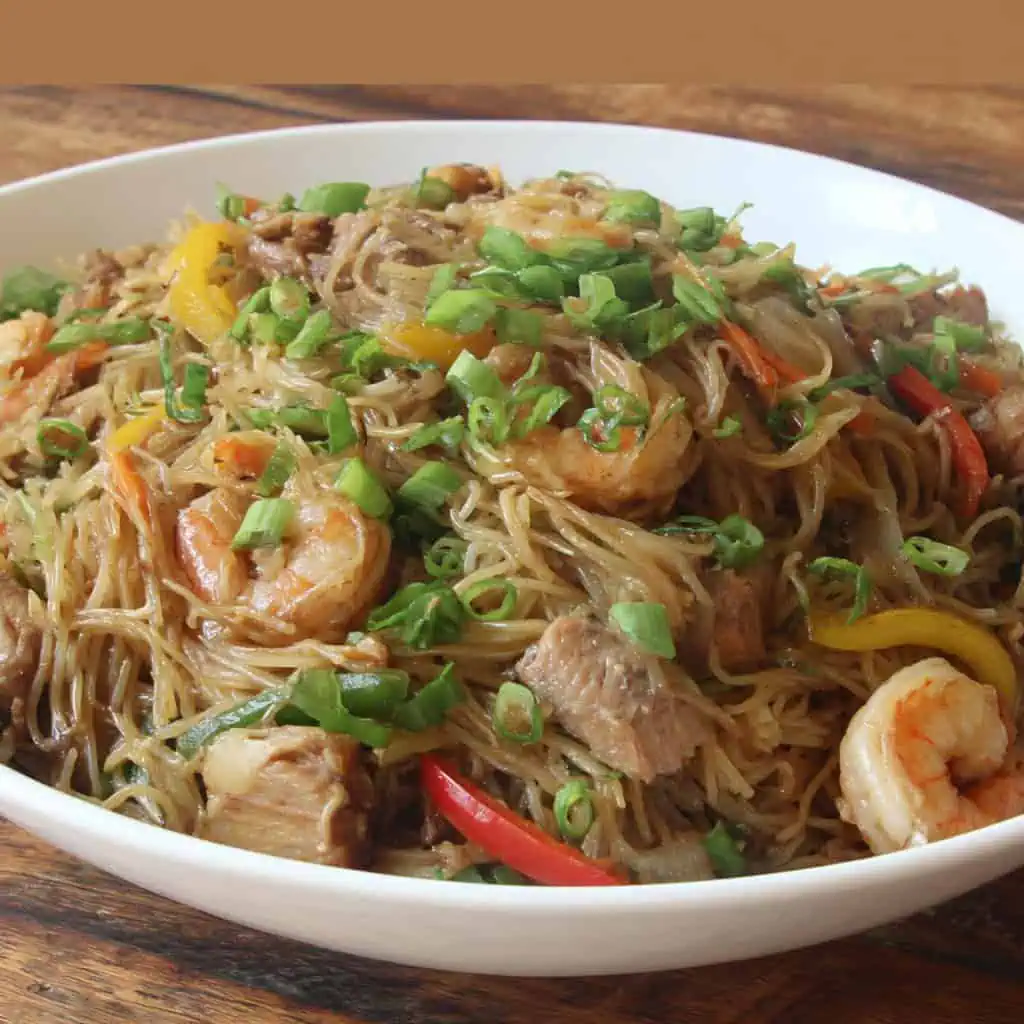


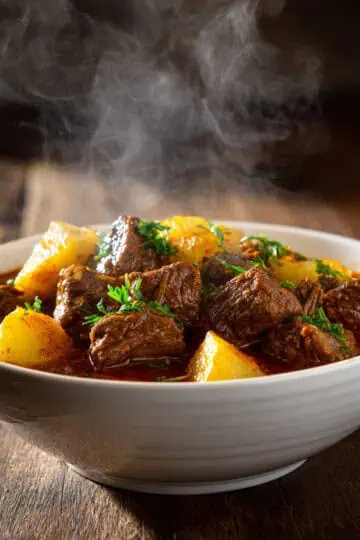


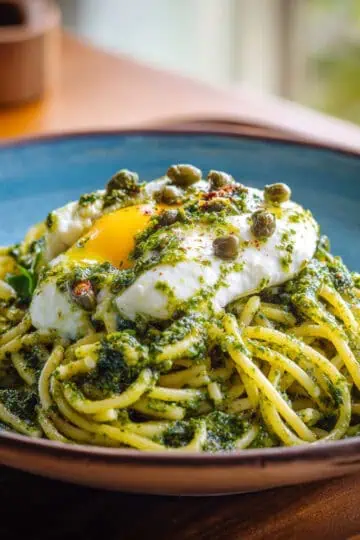
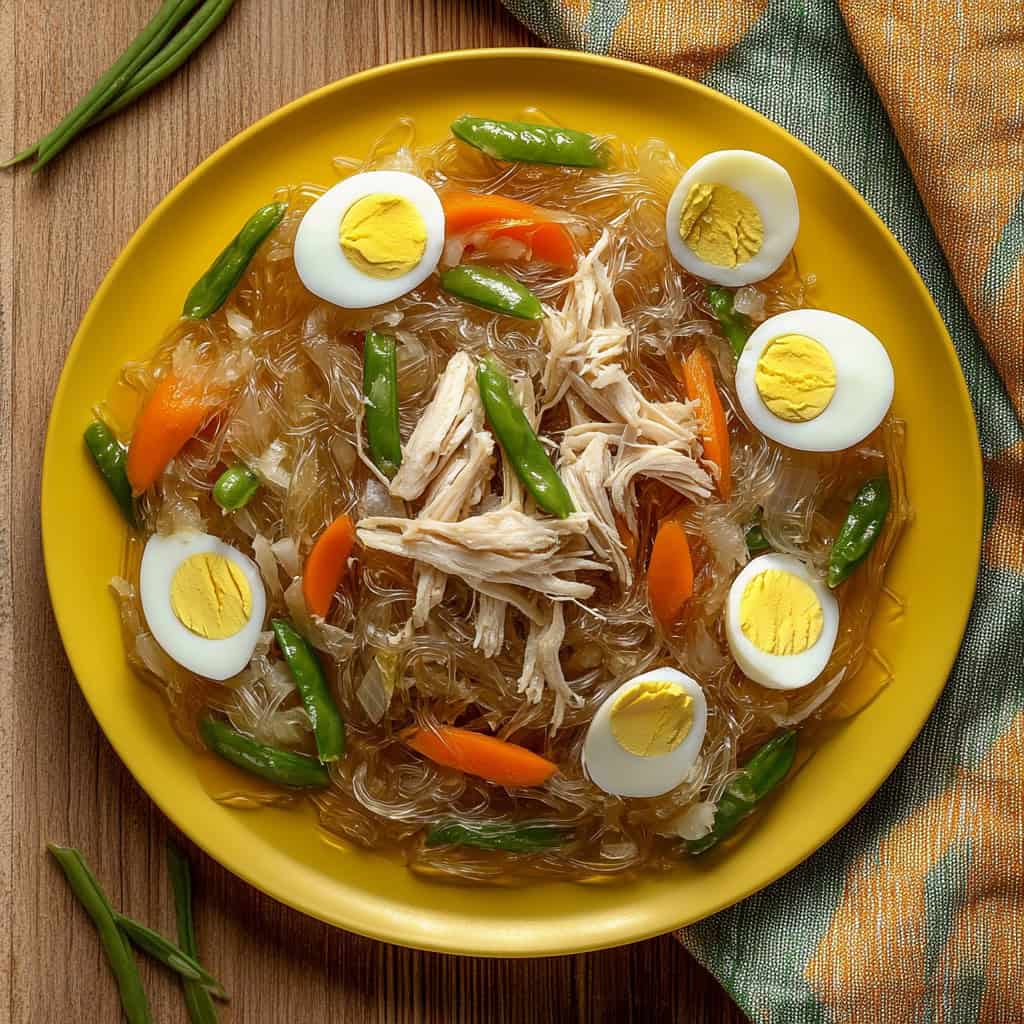
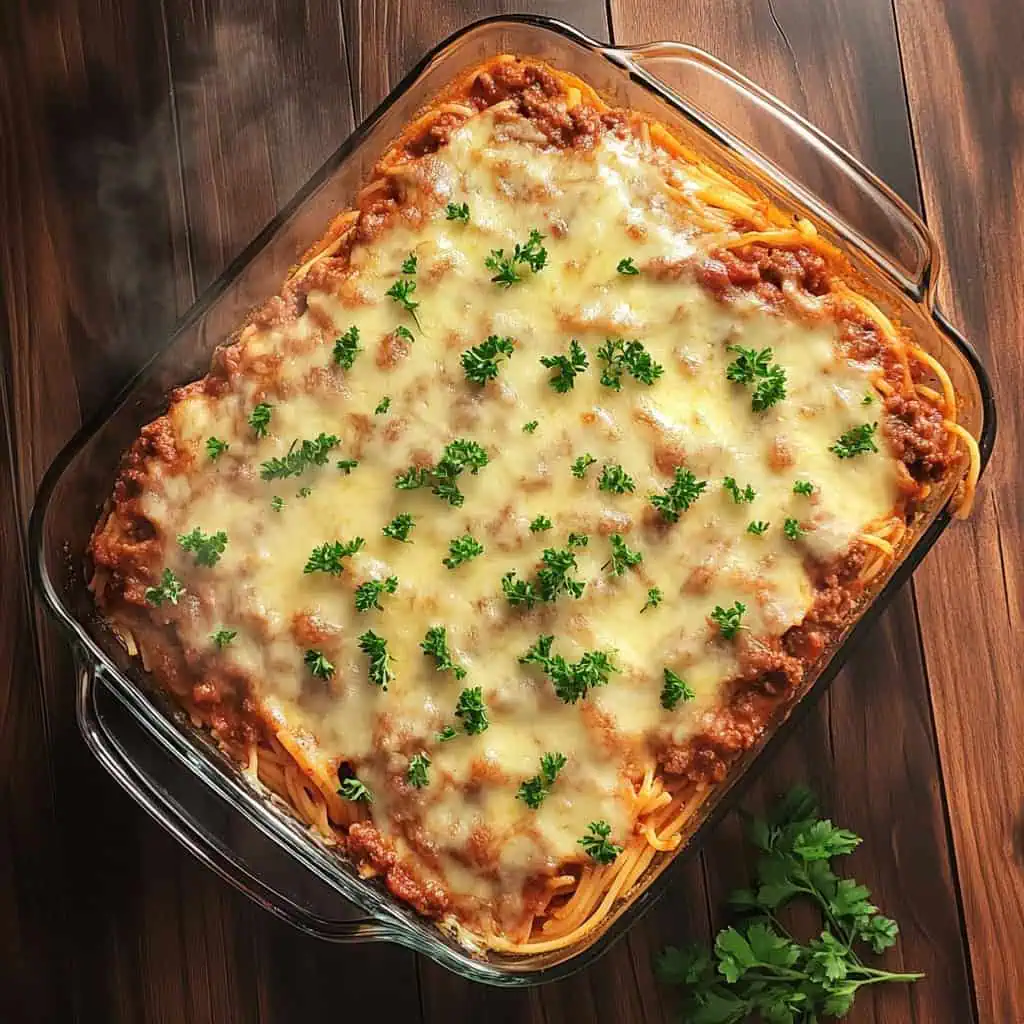
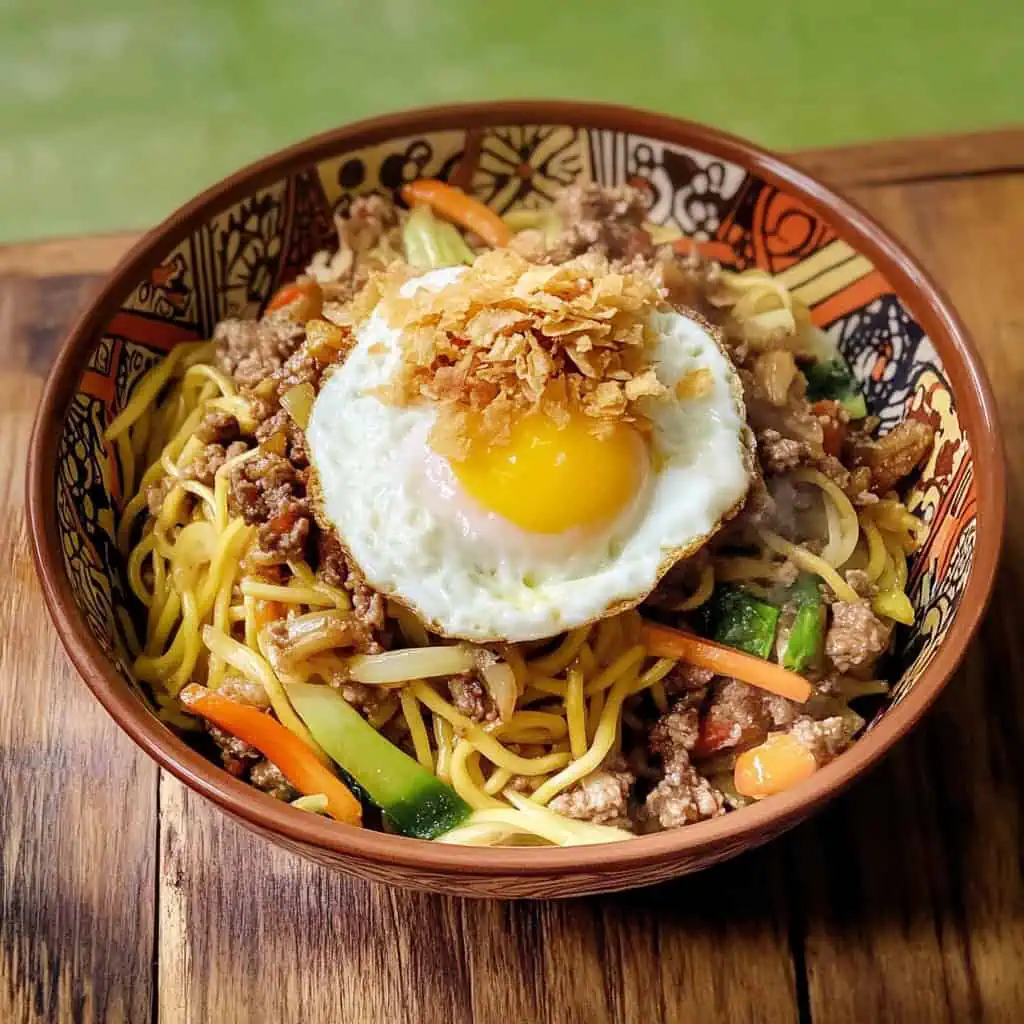
Comments
No Comments